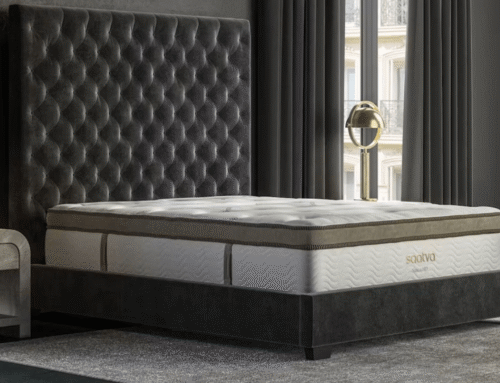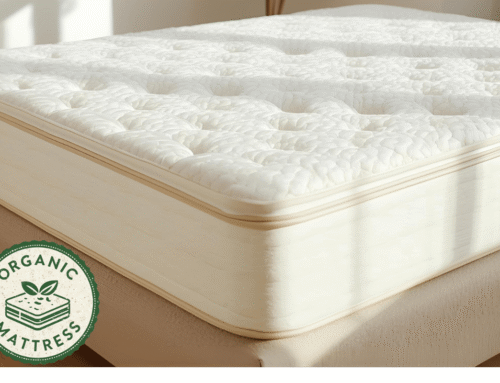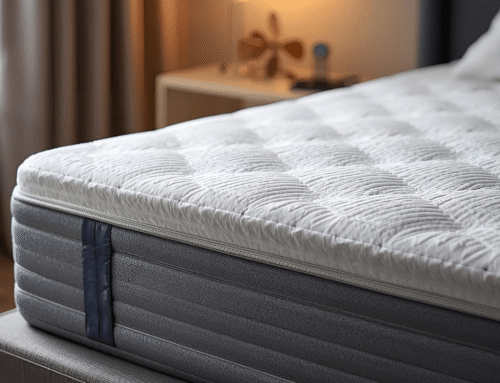Waking up stiff or tired after a full night’s sleep often means your mattress is to blame. Memory foam mattresses offer comfort at first, but they can lose that comfort over time. The material wears out, and it stops supporting your body properly. To understand this better, it helps to know what a memory foam mattress and a gel memory foam mattress are, as well as the typical lifespan of a memory foam mattress.
A memory foam mattress lasts about 7 to 10 years, but this varies based on usage and quality. As it ages, sagging spots or lumps can form, which leads to discomfort and restless nights. Ignoring these signs can result in poorer sleep quality and possible back problems.
Knowing when to replace a memory foam mattress can help you avoid unnecessary pain and wasted money. Let’s explore the ideal mattress lifespan and the key signs that indicate it’s time for a new one.
Key Takeaways
- A quality memory foam mattress typically lasts around 7–10 years, though low-density foam or heavy daily use may shorten its lifespan.
- Visible sagging, deep indentations, and waking up stiff or sore are clear signs your mattress no longer provides proper support.
- Hot sleepers might notice sagging sooner, since heat softens foam. Gel-infused designs or cooling covers can help maintain comfort.
- Regularly rotating the mattress, using a solid base, and applying a waterproof mattress protector are easy ways to slow wear and keep your bed fresh.
- Waiting too long to replace your mattress can cause pain, restless nights, and increased allergens, all of which negatively affect both sleep quality and health.
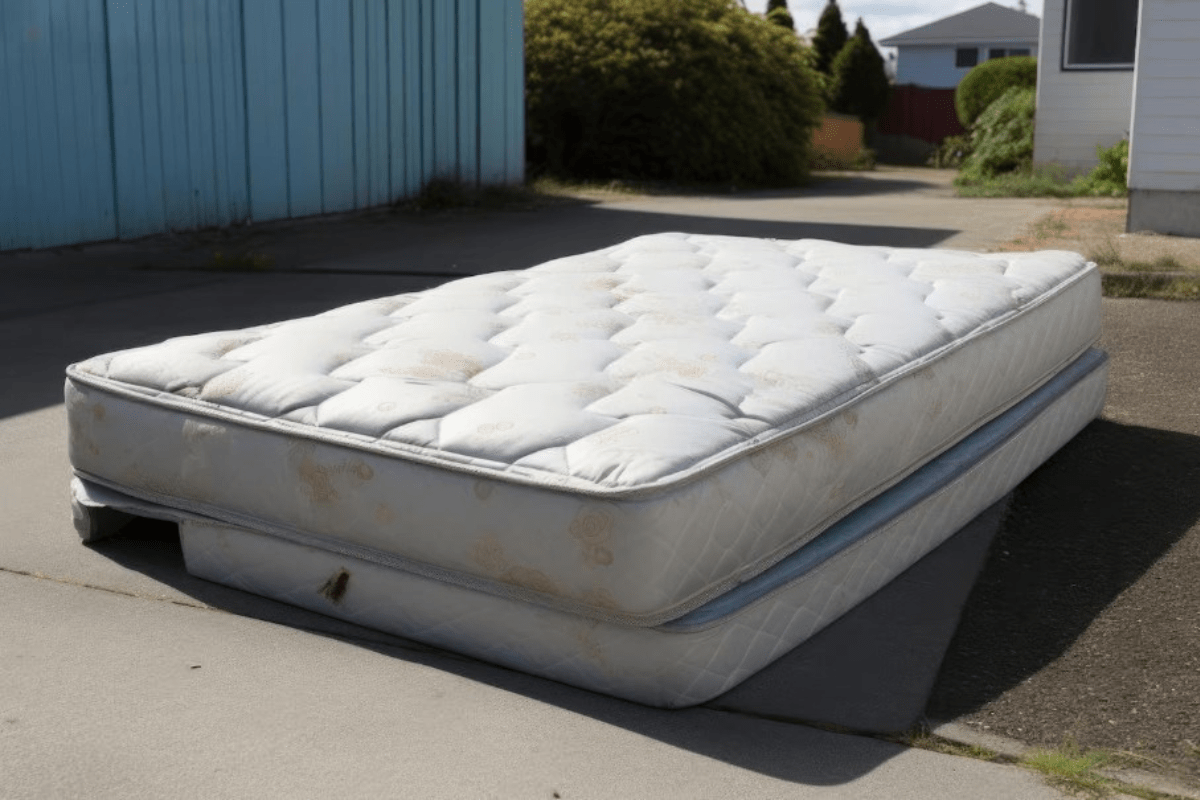
Average Lifespan Of A Memory Foam Mattress
Most memory foam mattresses typically last around 7 to 10 years, depending on several factors like foam density, care, and usage frequency. Higher-density foam usually holds up better and can approach the 10-year mark, while lower-density options may begin to sag after about 5 years. Daily use, especially with two sleepers or pets, speeds up wear.
Proper maintenance is important in how long these mattresses stay comfortable. Rotating the mattress regularly helps even out wear, and keeping it clean prevents damage from dirt and moisture. Using a solid foundation or platform with close slats also supports the foam, reducing stress on the layers.
Even with the best care, memory foam naturally loses its resilience over time. The foam cells gradually break down, which leads to decreased support and comfort. Eventually, replacement becomes necessary as the mattress no longer provides the support needed for restful sleep. It is also useful to consider factors such as the optimal thickness of memory foam mattresses, its typical cost, the effects of sleeping on it before 48 hours, and the time it takes for a memory foam mattress to fully expand to ensure you choose the right mattress that fits your needs and expectations.
How To Tell When It’s Time To Replace
A memory foam mattress shows its age through several noticeable signs. Waking up feeling stiff or fatigued usually hints that the mattress no longer provides proper support. Uneven or overly soft foam, along with visible sagging or indentations, suggests the mattress has lost its shape and resilience. To address some of these issues, knowing how to fix dip in memory foam mattress and how often to rotate it can help prolong its usability.
Increased tossing and turning during the night can also indicate discomfort caused by a worn-out mattress. Sometimes, unpleasant odors or allergy symptoms may develop as dust mites and allergens accumulate in the foam. These signs point to a mattress that may no longer be clean or supportive enough for restful sleep.
Even if the mattress looks okay at first glance, the foam can still lose its ability to maintain spinal alignment. This gradual decline can affect posture and overall sleep quality. Listening to how the body feels upon waking often reveals mattress issues earlier than visible wear does.
Tips To Make Your Memory Foam Mattress Last Longer
Memory foam mattresses are known for being comfortable, but they need regular care to last. One simple way to keep them in good shape is by rotating them every 3 to 6 months. This helps prevent one side from wearing out faster than the other. Using a mattress protector is also helpful. It keeps the mattress clean and protects it from spills and stains.
Make sure the mattress sits on a solid, supportive base. If the base is weak, the foam can start to break down early. Avoid putting too much weight on one spot or jumping on the bed, since that can leave dents that don’t bounce back. It’s also a good idea to keep the room cool and dry as heat and moisture can cause the foam to wear out faster.
These small habits can help your mattress last closer to 8 to 10 years. But if it stops feeling comfortable or no longer supports your body well, it might be time to get a new one. Good sleep starts with a mattress that actually works for you.

Why Mattress Density Matters
Not all memory foam mattresses are the same. Foam density plays a crucial role in how long they last. Lower-density foams, which are usually under 3 pounds per cubic foot, tend to wear out more quickly. They typically last about 3 to 5 years before they start to lose their support. These mattresses are cheaper but might not offer long-lasting comfort.
Foams with medium density, ranging from 4 to 5 pounds per cubic foot, provide a good balance of support and longevity. They generally last around 6 to 8 years and maintain their shape and comfort longer than lower-density foams. This range is a good choice for those looking for durability at a reasonable price.
High-density foam, weighing over 5 pounds per cubic foot, offers the most durable support and can last up to 10 years. While it costs more, this type is better at resisting sagging and breakdown over time. Checking the density label is essential to choose a mattress that can handle regular use.
What Happens If You Wait Too Long?
Delaying the replacement of an old mattress often leads to discomfort, such as back, neck, and joint pain. Over time, worn-out materials lose their ability to support the body properly, causing aches that interfere with daily activities. Even if the mattress looks fine, the lack of support affects physical health.
Sleep quality often declines significantly with an aging mattress, resulting in restless nights and daytime fatigue. Many people do not realize their tiredness is linked to the poor condition of their mattress until the effects become more severe. Constant tossing and turning disrupts the natural sleep cycle, making it harder to achieve restful sleep.
Dust, allergens, and dust mites build up in mattresses over the years, often making allergy symptoms worse. This accumulation can trigger sneezing, congestion, or irritation, especially for those sensitive to allergens. Regularly replacing a mattress helps keep a cleaner, healthier sleep environment and reduces these problems.

How Sleeping Position Affects Longevity
Certain sleep positions can wear down a mattress faster than others. Side sleepers often notice deeper indentations near the shoulders and hips because those areas press down harder. Over time, this uneven pressure creates noticeable body impressions on softer foam.
Back sleepers distribute their weight more evenly, which helps the mattress keep its shape longer. They usually have fewer problems with sagging or early wear. This position is generally more forgiving, especially on high-density foam beds.
Stomach sleepers might see soft spots forming in the middle area sooner. Since the torso presses down heavily, it can cause the mattress to dip over time. That dip disrupts spinal alignment, which may lead to lower back pain if not addressed.
How Often Should You Replace If You’re A Hot Sleeper?
Hot sleepers usually notice their memory foam mattress loses support earlier than expected. Constant heat softens the foam, which leads to sagging and less pressure relief over time. Most notice signs of wear around the 5 to 7-year mark, sometimes sooner with daily use and no cooling features. To help manage this, knowing how to make a memory foam mattress cooler and firmer can improve comfort and extend the mattress’s lifespan.
Mattresses designed with gel-infused foam or breathable covers tend to hold up longer in warm environments. These materials help manage trapped heat, which can slow down the foam’s breakdown. While not a guarantee, this type usually stays comfortable for a bit longer than standard memory foam.
People who sleep warm might also rotate the mattress more often to prevent uneven wear. Some even use cooling pads to extend its life, though results vary. In general, hot sleepers should expect to replace their mattress a little earlier than someone who sleeps cooler.
Should You Replace Memory Foam After A Major Spill?
A large spill on memory foam, especially from urine, wine, or excessive water, usually causes deeper issues than it first appears. Even after blotting and surface cleaning, moisture can settle into the lower layers and quietly affect the integrity of the foam. What looks dry on top might still be damp inside. Proper care involves getting urine and stains out of the memory foam mattress, cleaning it thoroughly, and drying it completely to prevent lingering moisture and damage.
Over time, that trapped moisture creates the perfect place for mold or bacteria to thrive. Some notice a sour or musty smell that doesn’t go away, while others feel soft, uneven spots that weren’t there before. Those signs suggest the foam has been compromised and should be replaced.
Many learn this the hard way and now won’t go without a waterproof protector. Eating in bed, letting pets sleep over, or sharing a bed with young kids raises the chances of spills. Prevention costs less than replacing a mattress and avoids the stress of dealing with hidden damage later.
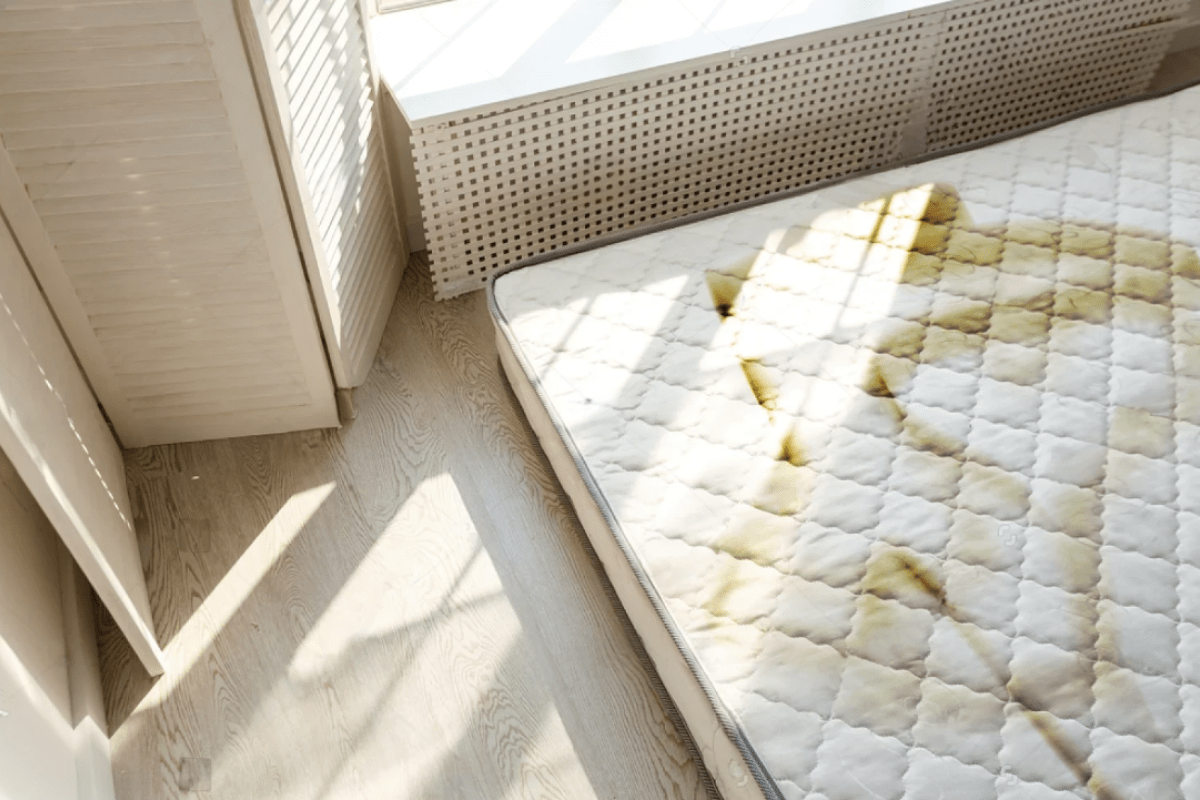
Common Misconceptions About Mattress Lifespan
Some assume a high price tag guarantees a longer-lasting mattress, but that’s not always true. What really matters is the foam density, coil quality, and how the bed holds up over time. Even expensive models sometimes cut corners with soft, low-density layers underneath.
People say memory foam naturally sags over time, yet deep body impressions and uneven surfaces aren’t signs of normal wear. Slight contouring is expected, but anything that affects comfort or alignment likely means the mattress has reached its limit.
Adding a mattress topper might seem like an instant solution, but it doesn’t solve anything long-term. If the support core has already broken down, a plush layer on top only hides the issue for a while. Durable construction and regular care go much further than patching problems later on. When it’s time to replace, proper methods for moving, compressing, storing, and disposing of a memory foam mattress can prevent damage and help with responsible handling.
Final Thoughts
If you wake up sore or stiff, your mattress might be the reason. Tossing and turning all night or feeling pain in the morning can mean your bed isn’t giving enough support anymore. Even a good mattress won’t last forever because it wears out over time.
Most of us don’t notice how old our mattress is until sleep starts feeling uncomfortable. If your bed is more than 7 to 10 years old or has dips or soft spots, it probably isn’t keeping your back in a proper position. You might also sleep better somewhere else, like in a hotel or at someone else’s place. That’s another sign something’s off.
You don’t need a long list of problems to know it’s time for a change. Just a few signs like waking up tired, having body pain, or needing more time to fall asleep, are usually enough. Pay attention to how your body feels when you wake up. That tells you more than any tag on the mattress or what a store might say.

